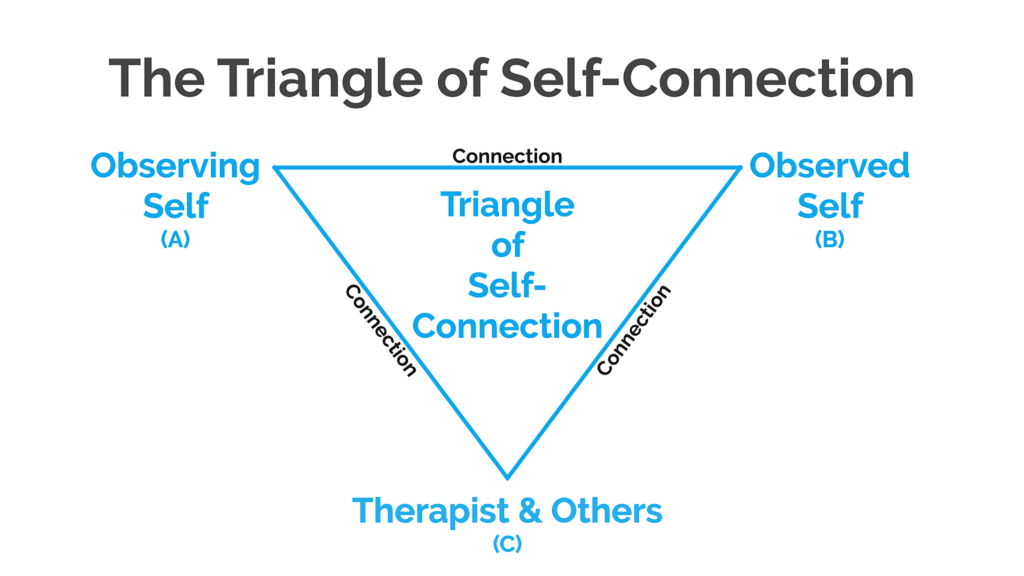The mirror technique is designed to increase self awareness. It is repeatedly employed during Self-Connection sessions.
To employ this technique, ask your patients or clients to carefully observe their face in a mirror or on a video screen. Your patient is both the Observing Self, and the Observed Self. The Observing Self (A) and the Observed Self (B) are two of the corners (vertices) of the Triangle of Self-Connection. The Observed Self is the image of the patient on the mirror or screen. The Observing Self is watching the Observed Self.

and learn about their feelings?
Ask your patient to describe what they see on the Observed’s face, paying extra attention to the mouth and eyes. Happiness, sadness, tears, tension, a frown, and a smile are common responses. Also ask what they physically feel in their body as they become aware of the expression on the Observed face.
Help your patient explore further. What is the reaction of the Observing Self as they watch the Observed’s face and learn about their feelings? How does the Observed feel about the Observing Self’s responses? Share your reaction to the interaction between the Observing Self and the Observed. Ask your patient how they feel about your reaction to the Observed and the Observing Self. The Therapist and Others (C) is the third vertex of the Triangle of Self-Connection.

Let me know if you have questions or comments about this technique.
If you want to learn more about Self-Connection and the use of the Triangle of Self-Connection, sign up for updates. You’ll also be able to learn more about its use after July 1st as the Self-Connection Academy releases material, at the IEDTA Boston Conference September 26-28, and on September 25th at a pre-conference workshop that Kristin Osborn and I will be offering together.
I look forward to hearing from you,
Michael
